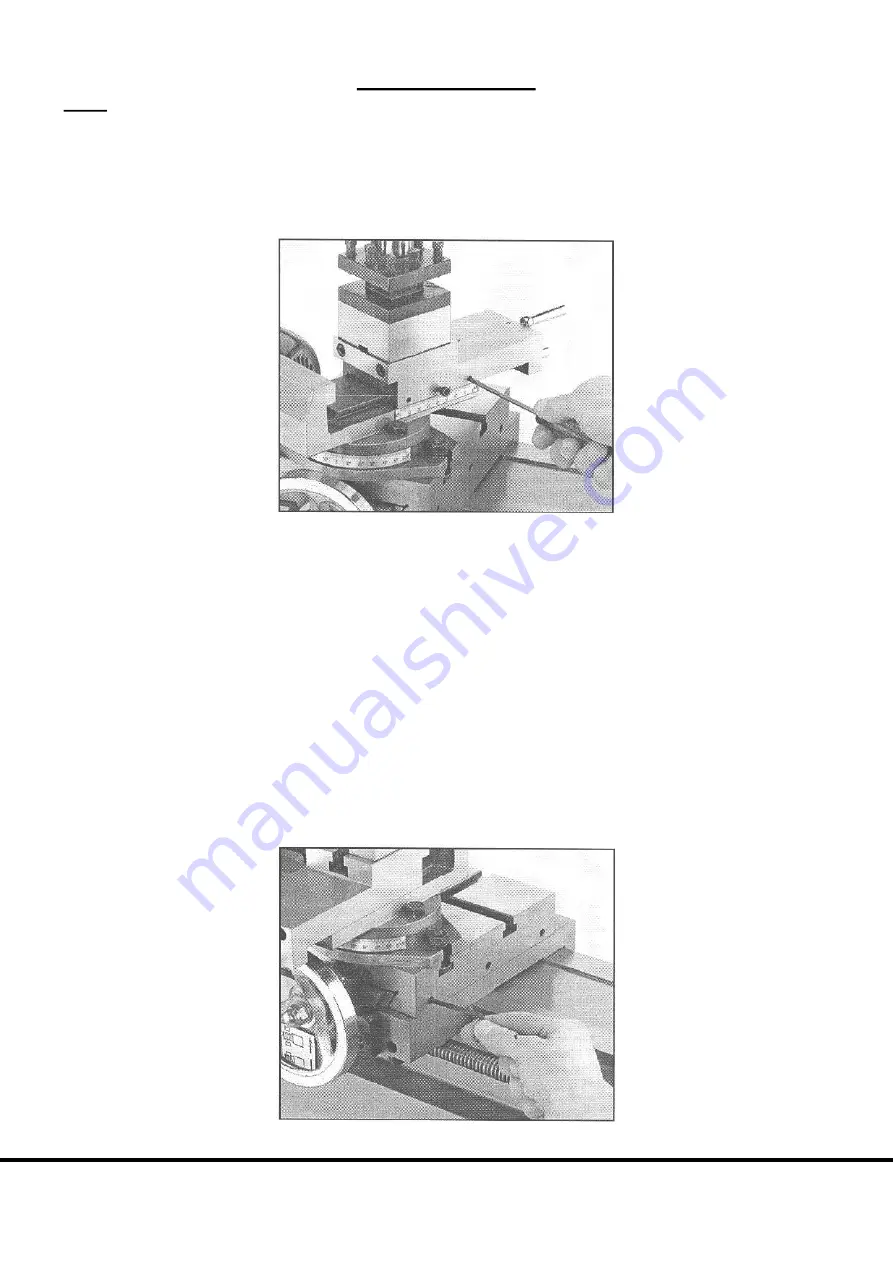
ADJUSTMENTS
GIBS
There are three gib adjustments for the Model B. They are: the crossslide gib, the compound slide gib
and the apron gib.
Crossslide Gib –
The gib on the crossslide is adjusted by tightening or loosening the 4 setscrews
located on the right hand side of the slide.
See Figure 30.
The large setscrew in the middle is used to lock
the cross slide in place during machining operations. Before adjusting the gib screws, loosen this
setscrew.
Figure 30.
Tightening this screw tightens gib.
The gib is held in place by the setscrews.
Do not over tighten.
The gib is properly adjusted when a slight
drag is detected while turning the hand crank. This drag should be evenly distributed among the 4
setscrews, so adjust each so a slight drag is detected while the hand crank is turned. The large setscrew in
the middle of the slide can be tightened to lock the slide in place.
Notice
When adjusting gibs, keep in mind that the goal of gib adjustments is to remove unnecessary sloppiness
from the slides movement without causing them to bind. Loose gibs may cause poor finishes on the
workpiece and undue wear on the slide. Over tightening may cause premature wear on the slide,
Lead
Screw
and nut.
Compound Gib –
The gib on the compound has 2 setscrews to maintain tension on the slide. These
setscrews are held in place with retaining nuts. To adjust, loosen the retaining nuts and then tighten the
setscrews as needed. When proper tension has been detected by turning the hand crank on the compound,
tighten the retaining nuts while maintaining the position of the setscrew with an Allen® wrench as in
wrench as in
Figure 31.
Figure 31.
Securing setscrew.
Chester UK Model B
20






























